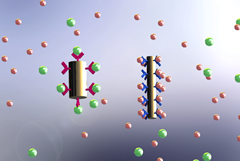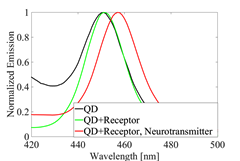Current Research
Direct Antenna Modulation is a method involving an antenna that is controlled in the time domain to enhance its performance. We have designed an antenna that uses varactor diodes to alter the resonance of the antenna as a function of time. When this resonance is tuned to match the instantaneous frequency of an incoming signal, the antenna then exhibits wider-band behavior than can be achieved without tuning the antenna. The ultimate goal of this work is to establish fundamental limitations on the performance of modulated antennas, akin to the limit established by Wheeler and Chu for linear, time-invariant antennas, as well as producing antenna prototypes that perform close to the fundamental limitations.
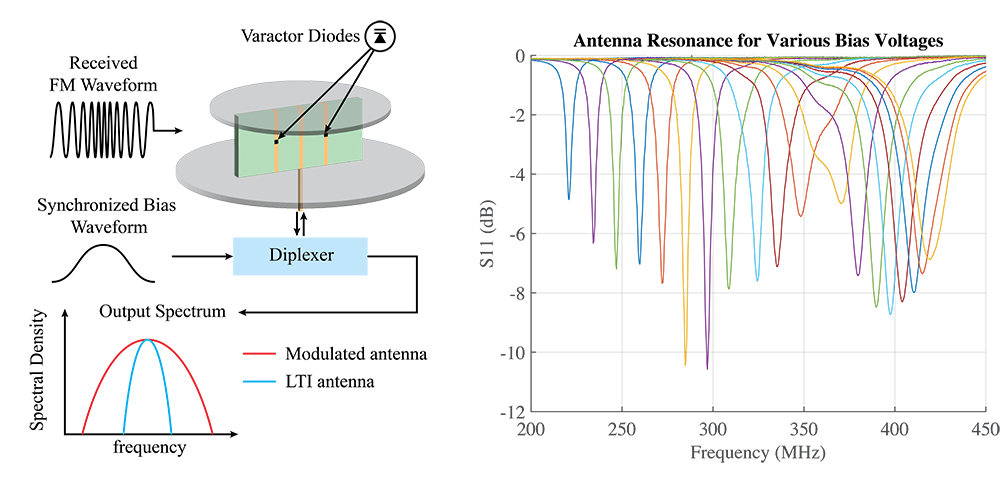
Plasma Microwave Circulators can be considered as a building block for plasma photonic topological insulators. We have designed and characterized a wideband E-plane Y-junction circulator with magnetized plasma powered by a germicidal bulb. The experimental demonstration of high nonreciprocity induced by gyrotropic plasma in the GHz range paves the way for engineering reconfigurable plasma topological insulators. With extended control of plasma parameters and magnetic field profile, the circulator can be tuned for its working frequency range as well as the degree of circulation. The plasma topological insulator can also provide a new platform to study the response of waves propagating in nonlinear plasma under the influence of a magnetic field.
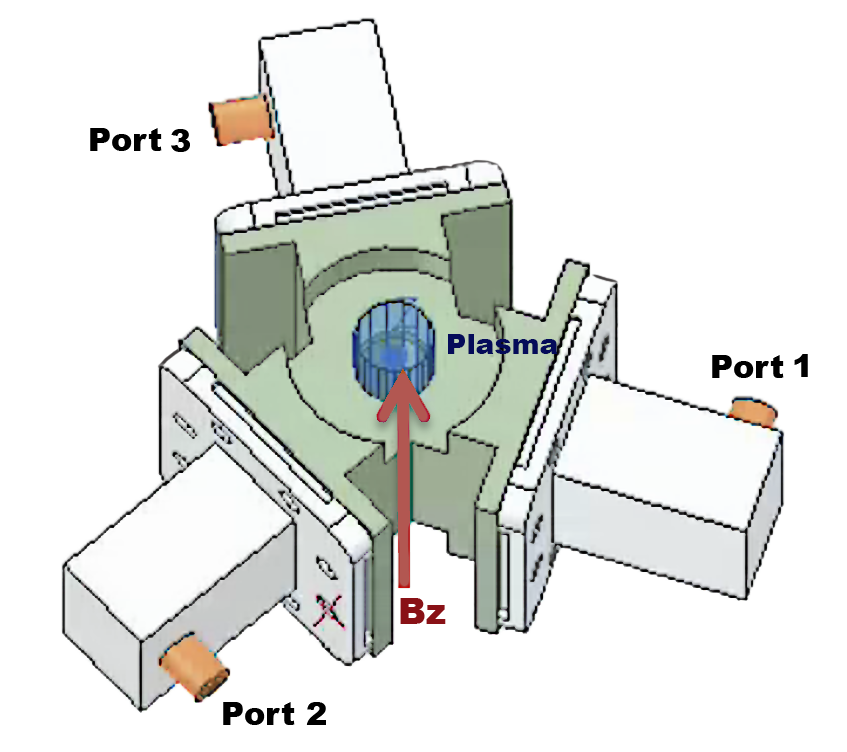
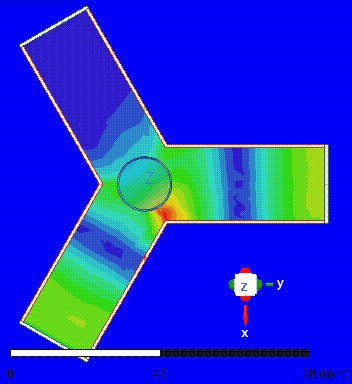
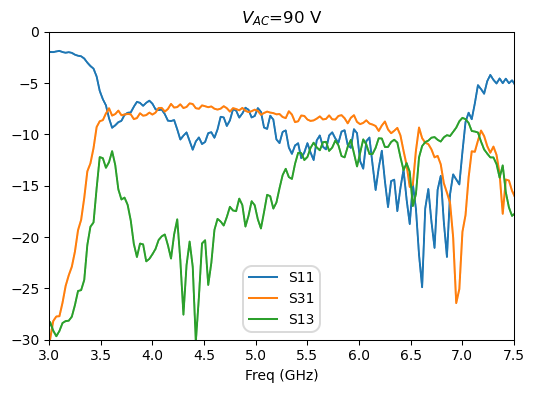
Line Waves are new type of electromagnetic wave that is confined to an infinitesimal line at the edge between two planar sheets. This makes them the 1D analogue of well-known 2D surface waves. This is possible by joining complementary impedance surfaces. Line waves exhibit singular field enhancement, ultrabroad bandwidth, and direction-dependent polarization, making them promising for applications including integrated photonics, sensing, switching, chiral quantum coupling, and reconfigurable waveguides.
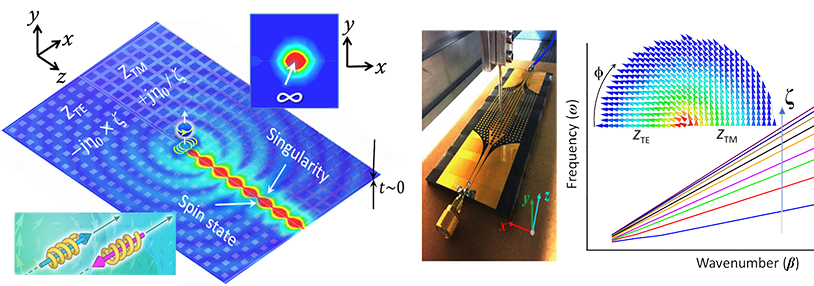
Polaritonic Line Waves reduce surface plasmon polariton waves to a 1D line version, which enable enhanced light-matter interactions and improved energy transmission reminiscent of topological waveguides. We have designed a practical terahertz graphene platform, which allows for their manipulation through electrostatic biasing. As the spatial confinement, propagation pathways, propagation constant, and polarization state are determined by the boundary conditions, it is also possible to alter these properties on demand, allowing for routing, switching and modulation applications.
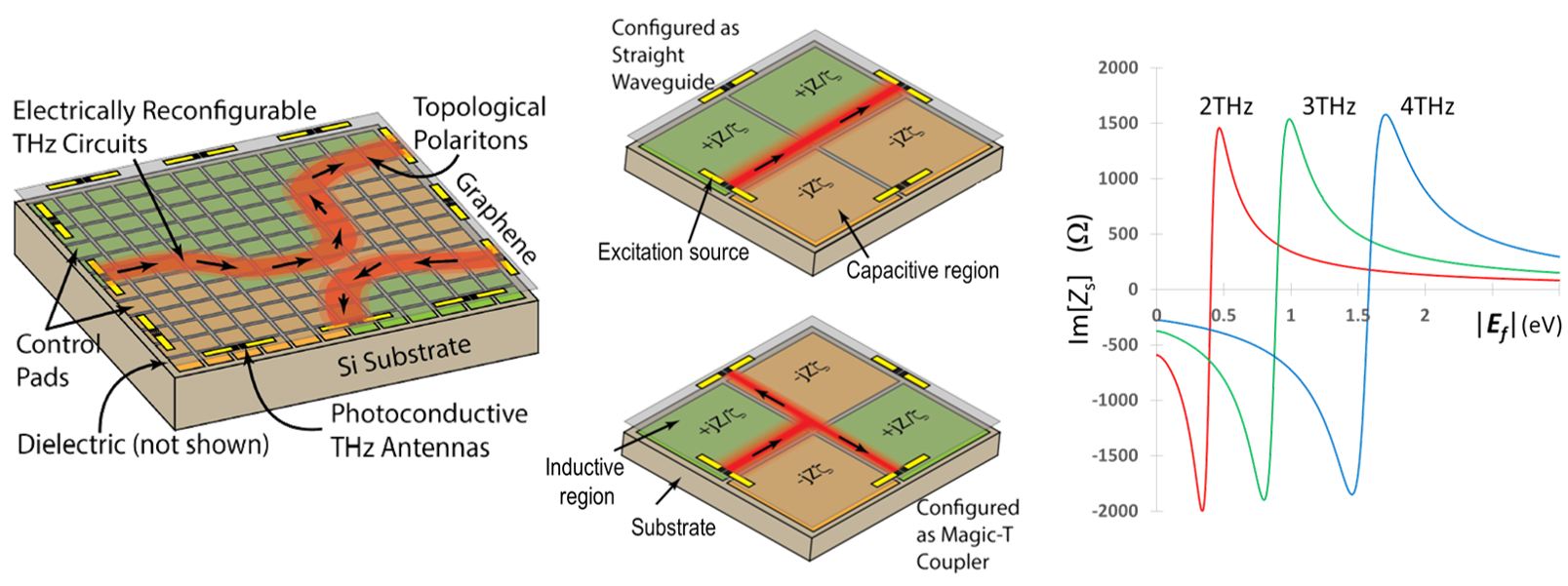
Photonic Topological Waveguides have attracted much interest recently because they promise immunity to backscattering unlike in ordinary photonic circuitry, where fabrication imperfections, disorder or arbitrary bends can severely reduce signal transmission. However, existing implementations have closed boundaries, are complex, bandwidth limited, and require fine-tuned materials. Our new simple approach based on ultrathin complementary metasurfaces is free from these drawbacks, bringing the technology closer to practical applications.
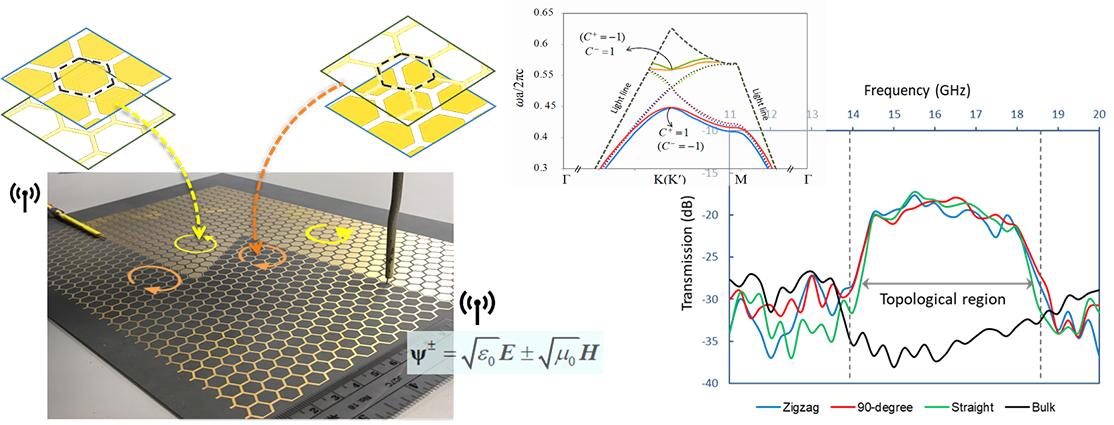
Higher-Order Topological Insulators (HOTIs) have shown that not only surface and edge states, but also localized zero-dimensional corner states can be topologically protected. We have demonstrated photonic HOTIs using metallic metasurfaces as well as silicon-on-insulator photonic crystals based on band inversion due to altered intra/inter-cell coupling strengths. Our work allows for robust localized cavity and guided edge modes on scalable, integrated photonic platforms. The open-boundary implementation also allows for direct experimental studies of classical topological states using near-field scanning techniques.
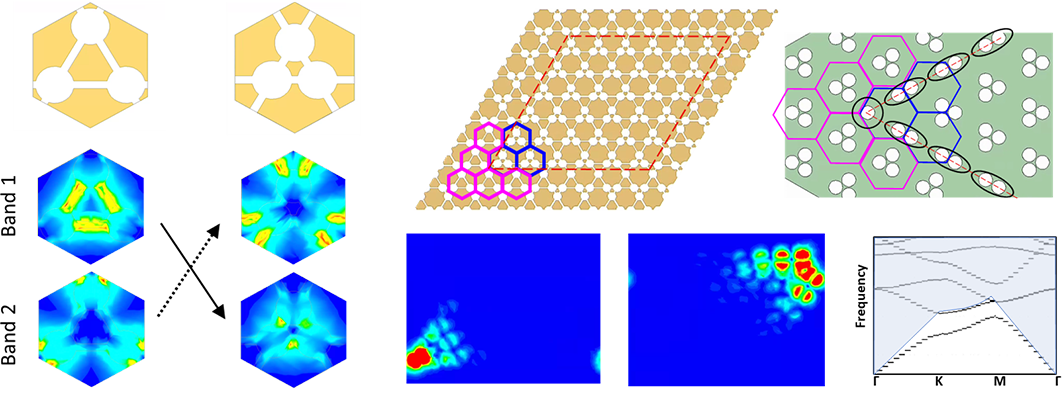
Amorphous Photonic Topological Insulators are superior to their periodic counterparts in that their topological modes are protected against long-range disorder. We have realized these in a reciprocal system using complementary metasurfaces by leveraging EM duality, and observed robust edge modes at the interface of such metasurfaces as well as along grain boundaries in their interior. Our platform can accommodate large degree of randomness, unlike crystalline symmetry-based platforms, making it promising for self-assembly production of optical topological metamaterials in lieu of arduous top-down nanofabrication technology.
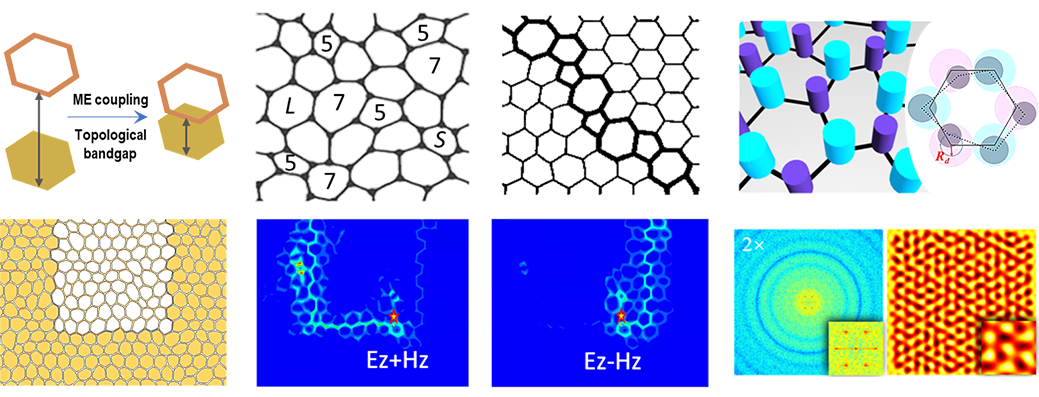
Topological Defects in Real Space are elementary lattice imperfections that cannot be removed by local perturbations. We have shown that photonic topological metasurfaces with such point and line defects in analogy to declinations and grain boundaries, respectively, in amorphous graphene, support cavity and guided modes in their interior. These modes are robust and may serve as alternative to 0D and 1D states in higher-order photonic topological insulators. Moreover, these point defects naturally exhibit unique Skyrmion-like spin field distributions at subwavelength scales.
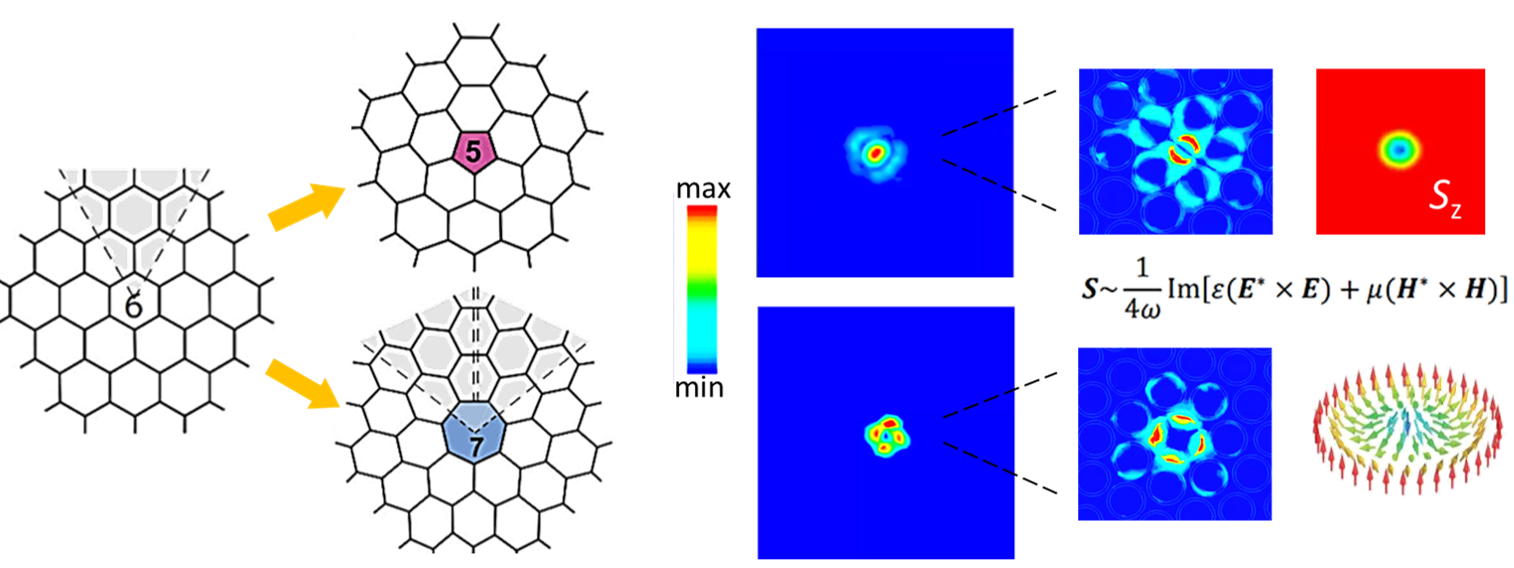
Valley-Contrast Physics has gained considerable attention for use in photonics, particularly for designing quantum valley Hall effect-type photonic topological insulators. These enable valley-polarized modes that are reflection-free in the absence of inter-valley scattering disorder, such as zigzag bends. We have demonstrated a new paradigm to support such modes in the telecommunications band using silicon-on-insulator triangular holey photonic crystal with C6v symmetry. This is done by rearranging one row of unit cells as in common line defect waveguides such that opposite orbital angular momenta states occur across the waveguide region.
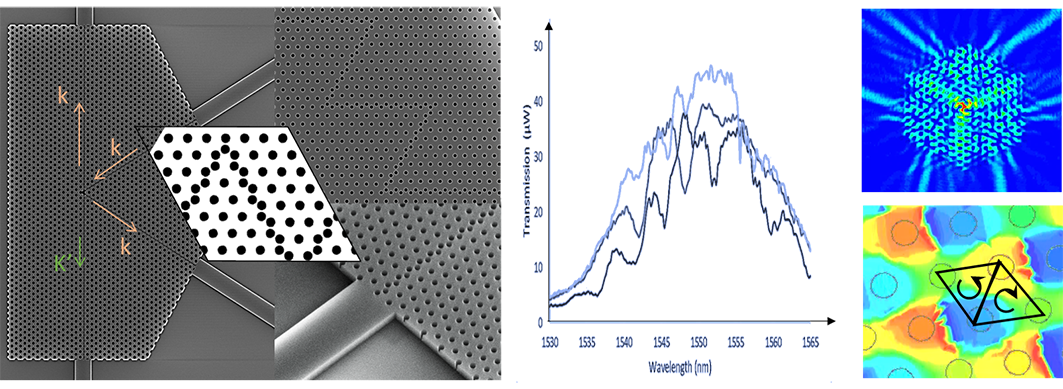
Grounded Photonic Topological Waveguides are advantageous over other topological structures because they are compatible with conventional microwave integrated circuits. We have designed a flat single-layer metallic topological metasurface of valley-Hall type above a ground plane, and demonstrated direct transition to a standard microstrip line with excellent coupling efficiency. This opens the door to putting topological structures into practical applications at the system level through direct integration with existing microwave and RF circuits components.
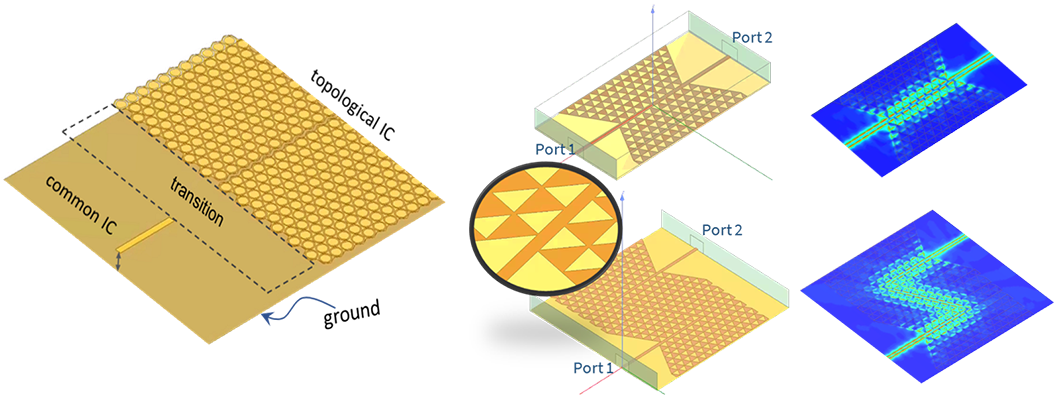
Reflectionless TEM Waveguides can be achieved by exploiting the intrinsic time-reversal symmetry of the electromagnetic fields of TEM modes. Counterpropagating modes have orthogonal polarizations that are time reversal counterparts of one another. We have designed a slot line waveguide that is enclosed by artificial-magnetic-conductors such that only fundamental quasi-TEM modes exist while coupling to extraneous modes such as plane waves is prevented. Perfect transmission efficiency is observed using ideal boundaries and practical PCB implementation shows clear enhancement over traditional designs.
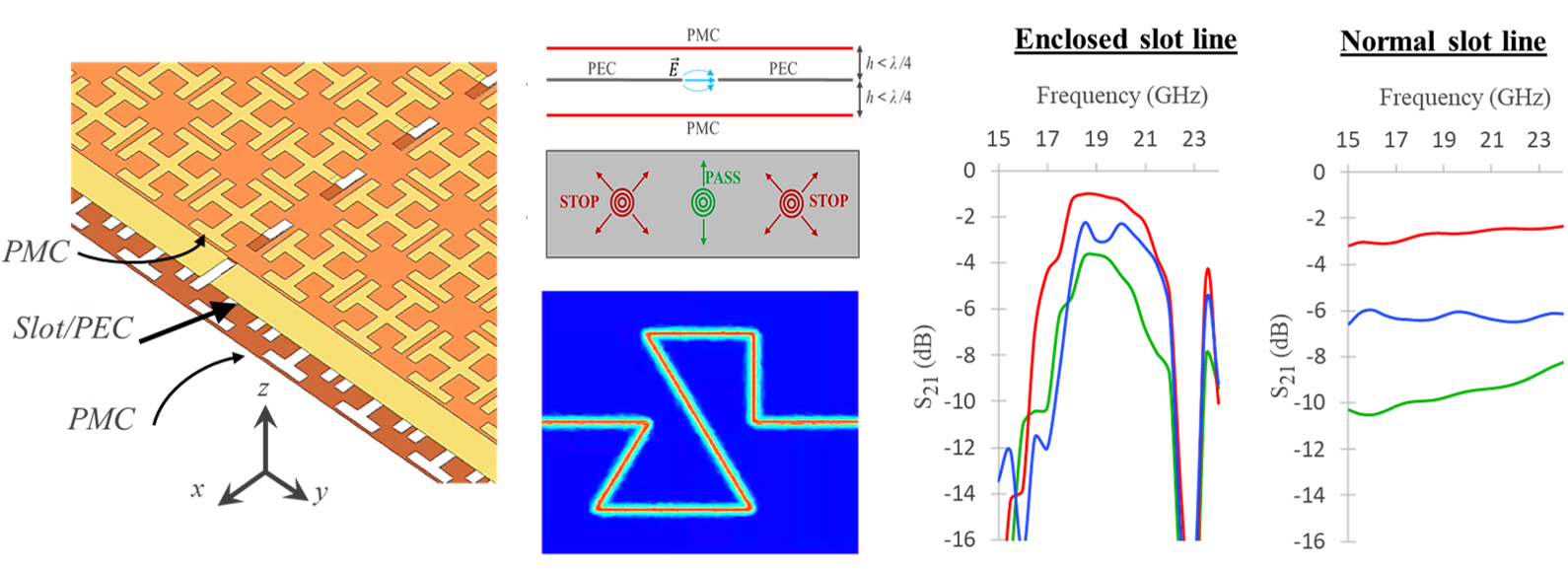
Phononic Topological Insulators for Surface Acoustic Wave (SAW) structures can be used as RF filters in future wireless devices. We have built an on-chip SAW waveguide on a lithium niobate substrate based on the idea of the quantum valley Hall topological insulator. Unidirectional SAWs can be guided along this topological waveguide without scattering even over sharp turns.
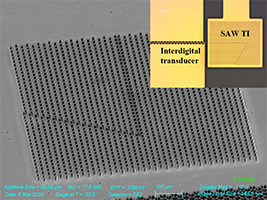
3D Phononic Waveguide Based On a Screw Discontinuity can be used for vibration damping, or work as a thermal diode. We introduced a screw discontinuity to a 3D phononic crystal, and found unidirectional modes in the bulk bandgap, with wave propagation confined to the center of the screw discontinuity. The xy-plane displacements of these modes show a rotational motion, which can be considered as an analogy to the circular polarization for EM waves.
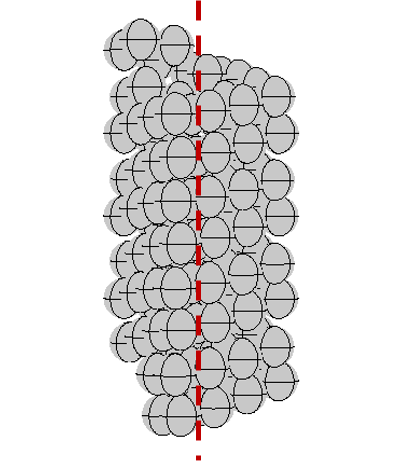
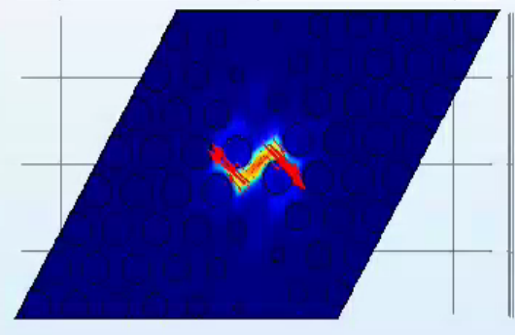
Diffusive Transport at Dirac Points is an intriguing wave transport phenomenon in photonic crystals with Dirac cones, where the energy flux transmits omnidirectionally while a uniform phase front is automatically guaranteed. By integrating photonic graphene with photonic topological insulator (PTI) protected edges, this phenomenon can be used to design horns with high aperture efficiency or to harvest energy from free space to PTI waveguide.
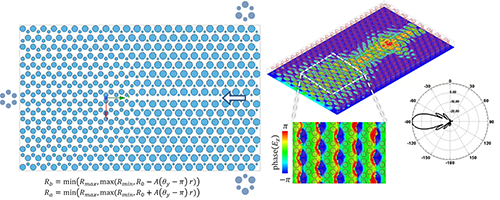
Chiral Surface Waves Spin-momentum locking is a phenomenon recently explored in electromagnetic waves that possess an evanescent tail which is accompanied by a transverse spin due to out-of-plane field rotation. We introduce novel metasurface design that supports chiral surface waves. The chiral surface waves are circularly polarized waves that possess two transverse spins, one due to out-of-plane field rotation which is intrinsic to any surface wave, and the other is due to in-plane field rotation which is imposed by the design, and both follow spin-momentum locking.

Steering Circularly Polarized Waves Over the last decade, much research has been directed towards making conventional optical devices such as lenses and waveguides using flat metasurfaces. Using planar optics provides compact on-chip platforms that are easily integrated. By carefully engineering metasurfaces’ equifrequency contours, we can allow propagation of highly collimated, circularly polarized surface waves and route them along defined paths.
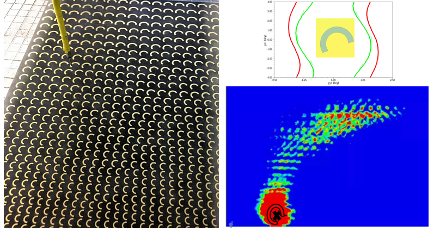
Zak Phase Based Photonic Topological Insulators can create interface modes with structures having incomplete bandgaps (eg: C4 symmetry). This allows for simpler structures with the topological phase needing to be calculated only in one direction. We use unit cell scaling to align lower and higher order bandgaps with opposite Zak Phases to create 1D edge modes using the same structure on both sides of the interface.
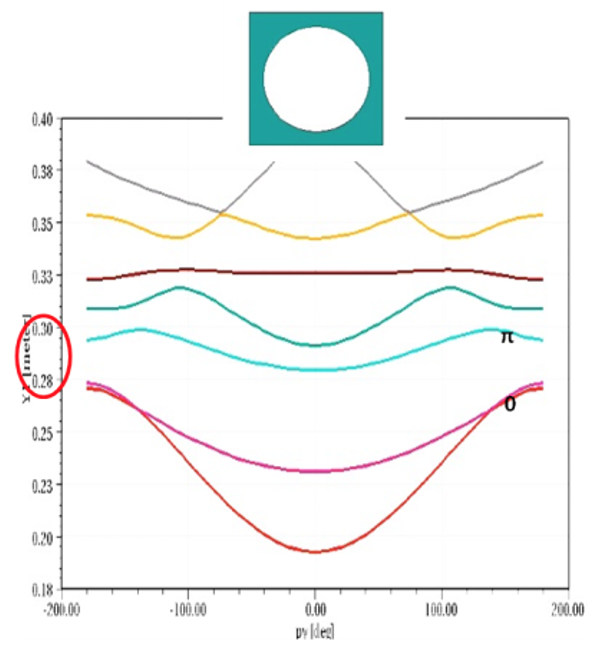
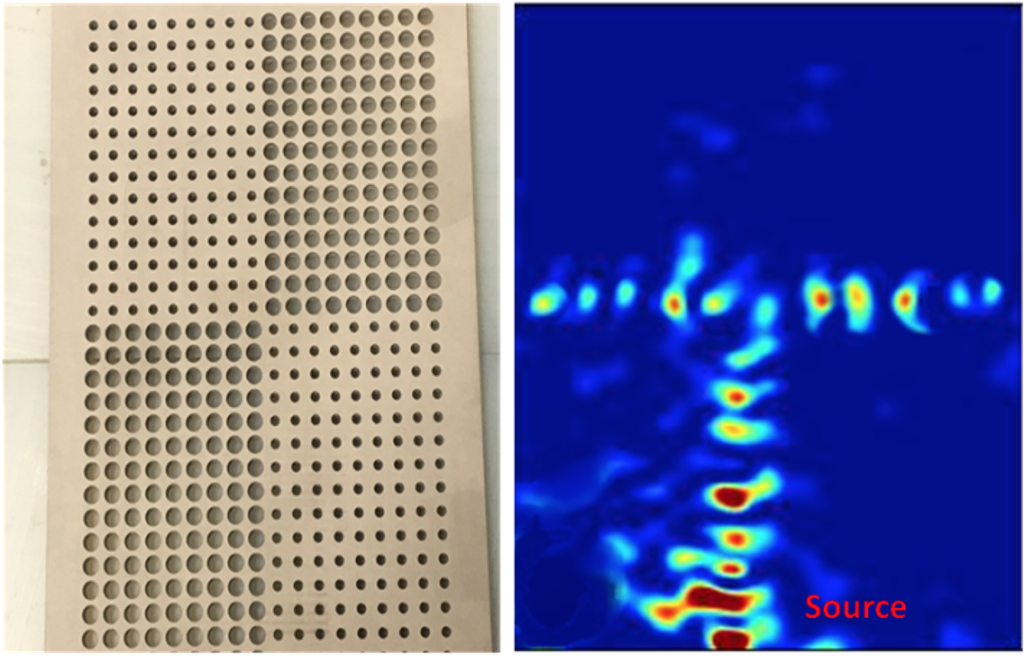
Topological Antennas involve a circularly polarized wave that is locked to a fixed propagation direction. The impedance mismatch at the aperture is incapable of sending energy back down the antenna unless a polarization flip is achieved. This low insertion loss creates a wideband and self matched antenna that can be used in both the guided and leaky region of the interface mode to design low profile aperture and leaky wave topological antennas.
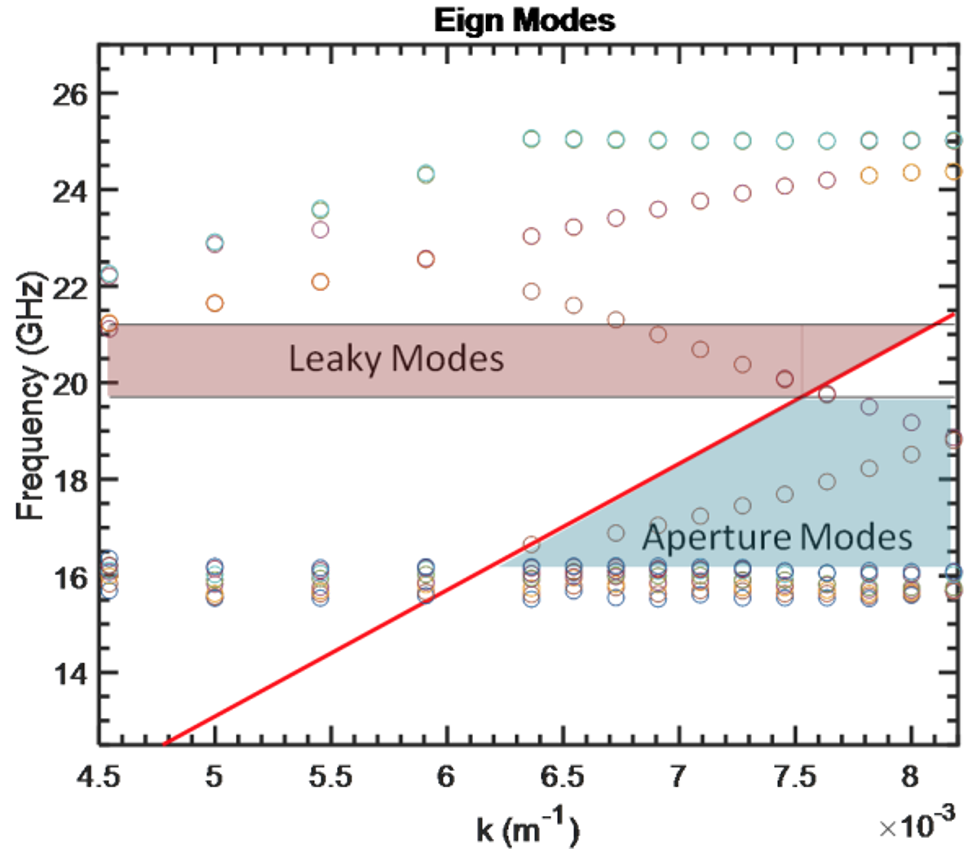
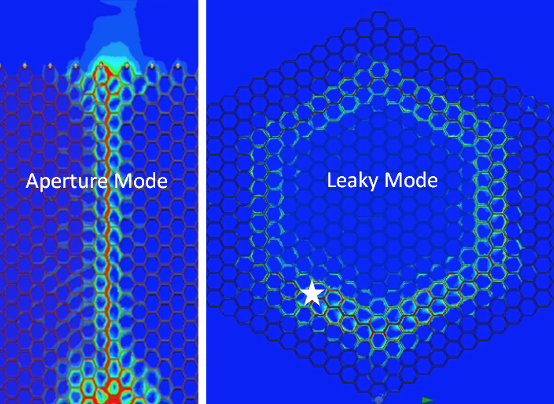
Dielectric Invariant Antennas that can be integrated into clothing are being designed for applications requiring consistent performance over narrow bandwidth, irrespective of distance of the antenna from lossy dielectrics like the human body. Since electric and magnetic antennas undergo opposite shifts in their resonances, a combination of the two can be used to cancel out the de-tuning effects of the environment.

Phototonic Topological Insulators (PTIs) are a new type of electromagnetic material that can create extremely robust waveguides, cavities, and filters. Their defining feature is the existence of modes only on the boundary of the material that are intrinsically immune from backscatter. They come in multiple types, both reciprocal and nonreciprocal, and can be analyzed via band structure simulations and custom numerical codes. Shown below is a numerical example of the Berry curvature for a valley-type PTI photonic crystal.
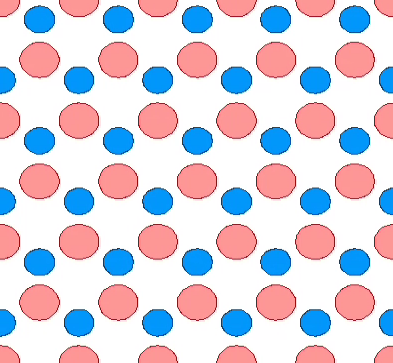
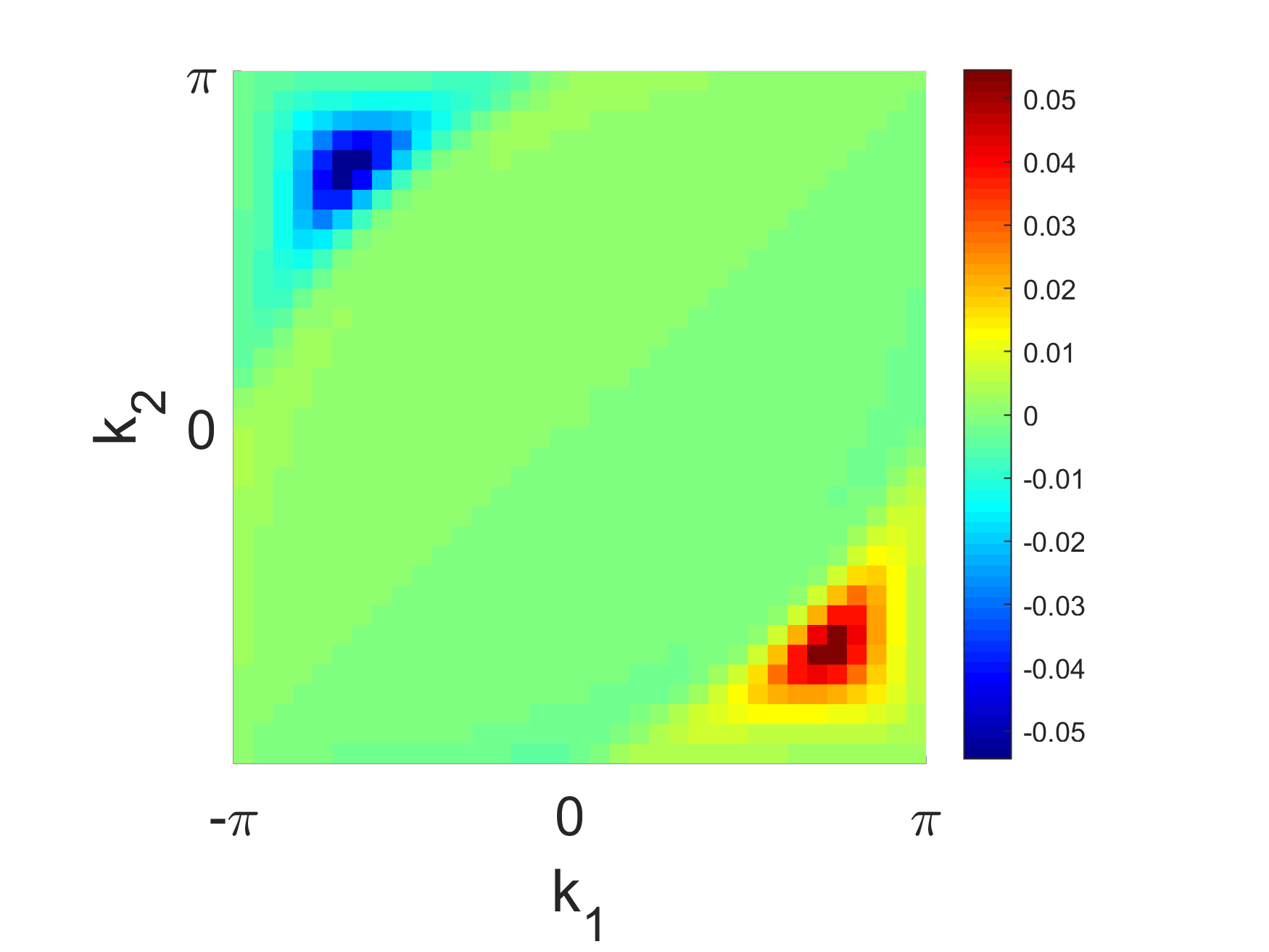
Electromechanical Resonances in Biological Systems are investigated using custom biophysical simulations to investigate non-thermal effects of EM waves on biological structures. While electric fields between charged and polar biomolecules (such as DNA and microtubules) are typically screened, high frequency fields can overcome this screening and may result in novel interactions.
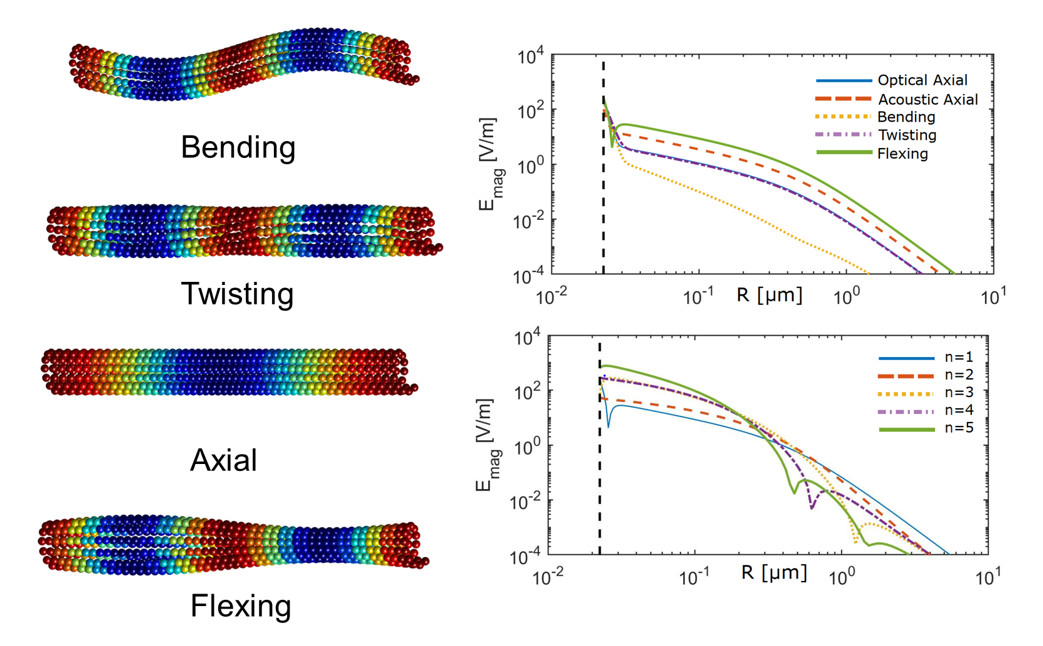
Dense Magnetic Coil Arrays offer the possibility of improving noninvasive neuromodulation over today’s single-function systems. Our scalable multichannel dense array system include user-defined E-field excitation patterns or loci over multiple sites (simultaneously or sequenced), reconfigurable depth of penetration and reduced extraneous excitation.
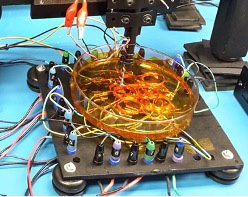

Photoemission based devices take advantage of the extreme field enhancement that is possible with nano-scale resonant plasmonic structures. With these devices, high electron emission current can be generated with low power lasers and low static voltage bias. Applications include vacuum electronics devices, all-metal photovoltaics, and new approaches for photochemistry.
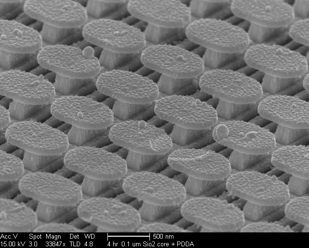
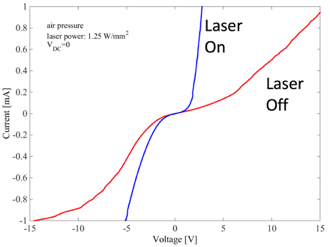
Anisotropic patterning techniques for generating a wide range of impedance surfaces enable varying size, direction, and shape of individual cells in the pattern regardless of the local environment. These surfaces allow control over surface wave propagation and scattering behavior. This example shows a surface designed to guide surface waves smoothly around a curve.

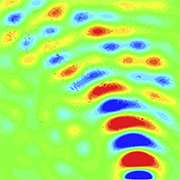
Nonlinear metasurface absorbers for high power surface waves consist of periodic structures with nonlinear circuit components that change states depending on input power levels. The large scale metasurface and associated measurement data demonstrate increasing absorption with higher input power. Other examples can vary their absorption based on the incoming waveform, or adapt their absorption band to match the incoming frequency.
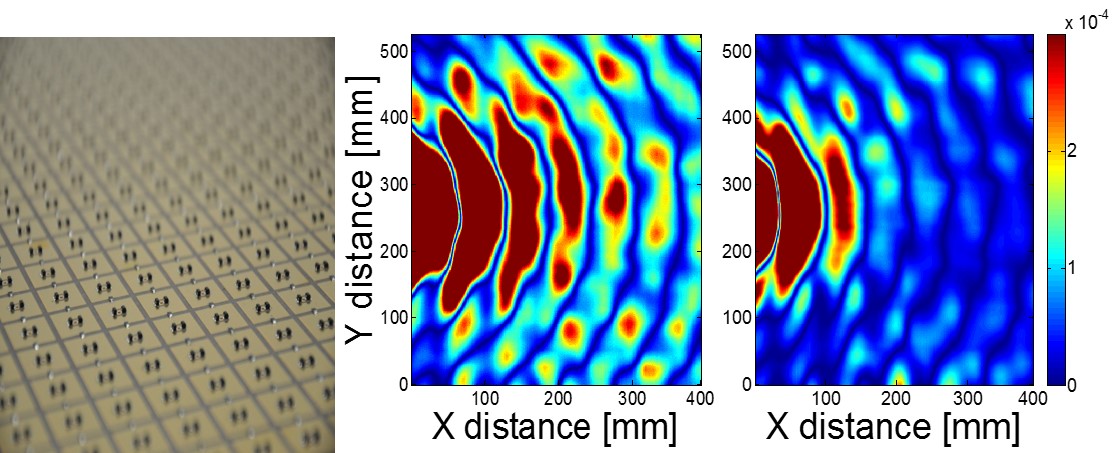
Broadband active metasurfaces allow us to exceed the bandwidth limits of conventinal artificial impedance surfaces using non-Foster circuit elements. This will enable control of scattering properties at frequencies that would otherwise be impractical. This example provides a broadband tunable impedance boundary with nearly an octave of bandwidth in the UHF range.
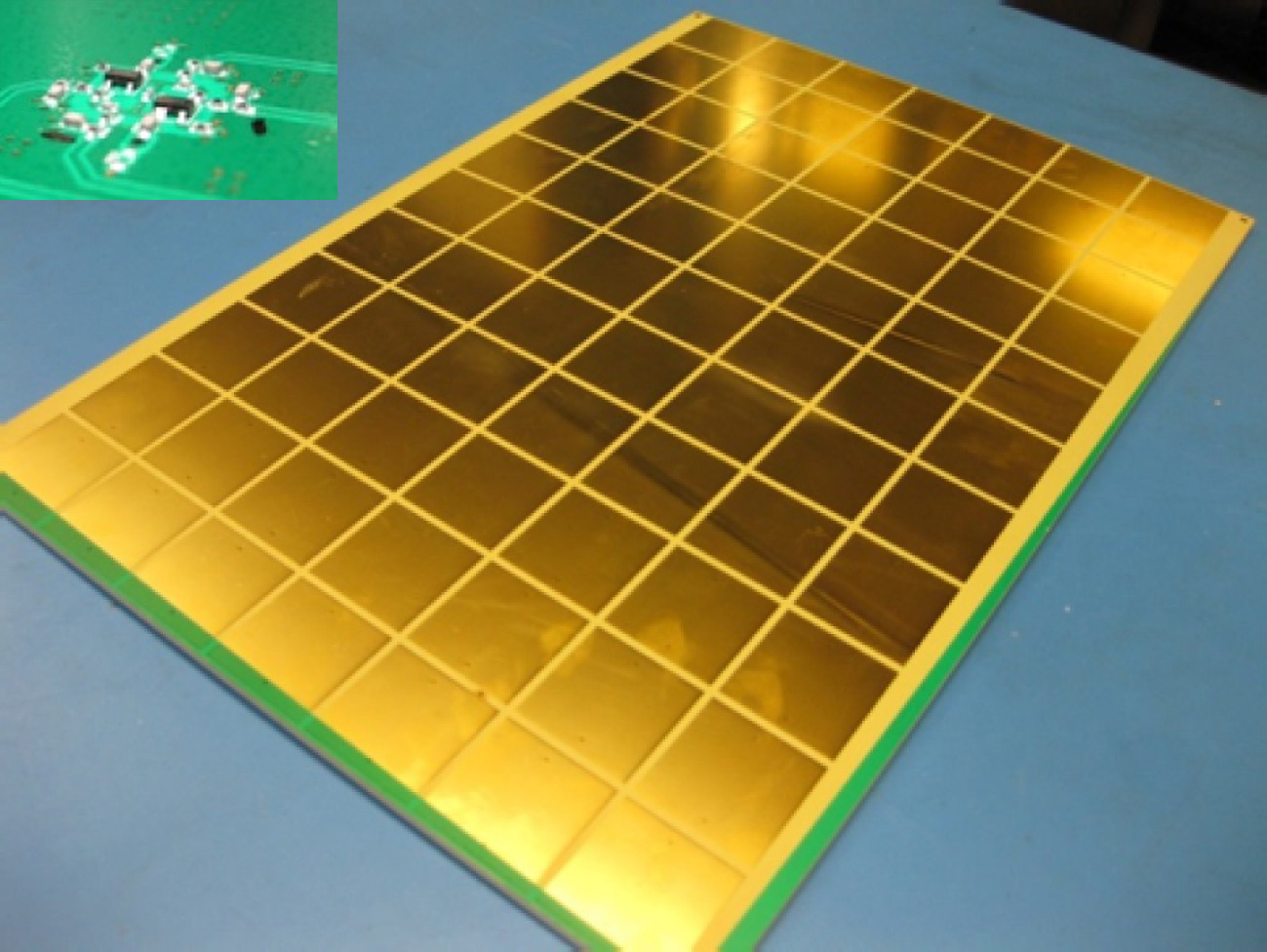
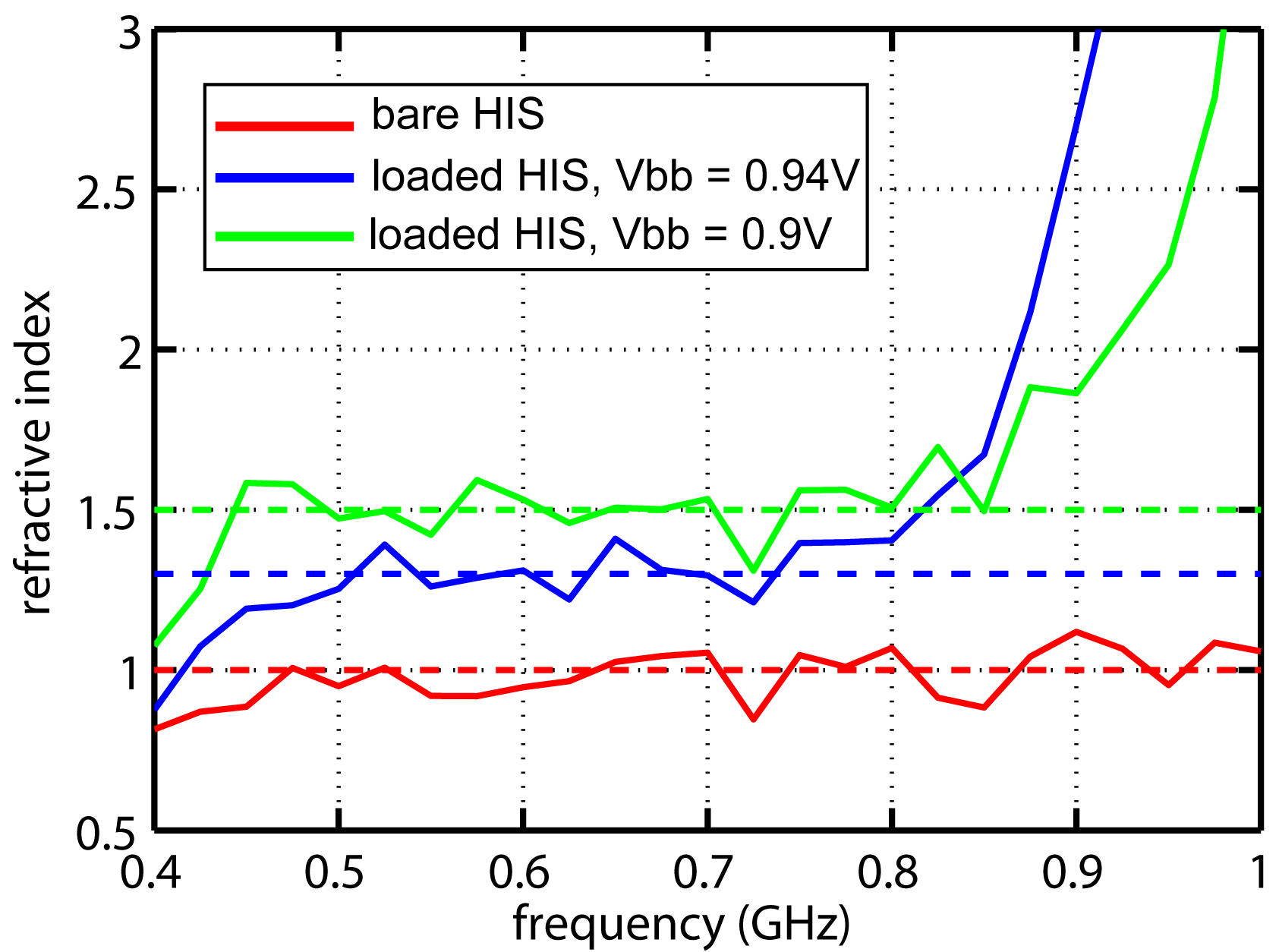
Superluminal waveguides based on non-Foster circuits demonstrate measured phase and group velocity greater than the speed of light. Of course, these waveguides obey the causality limit, and thus cannot transmit information faster than the speed of light. Nonetheless they provide an important medium for understanding the limits of superluminal propagation.
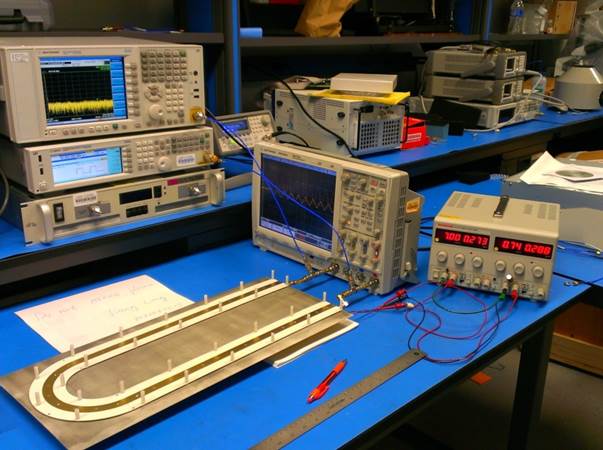
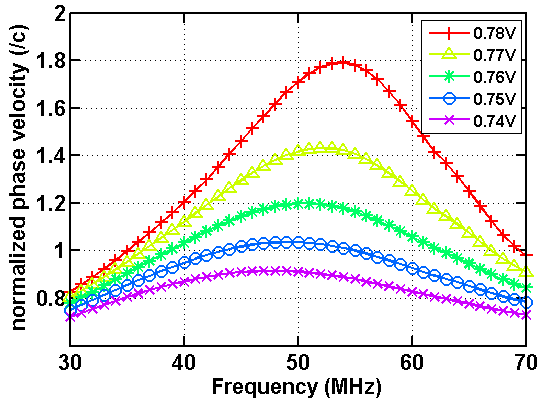
Nonlinear self-focusing of microwaves is demonstrated using a nonlinear impedance surface. The front surface has tuning varacotors, controlled by detectors and signal conditioning circuits on the back. The measured data shows self-focusing of a surface wave beam, counteracting diffraction.
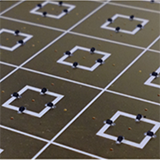
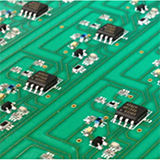
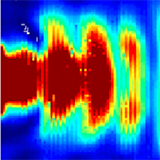
Scalable high power microwave sources using periodic structures act as a coherent array of switched ring-down oscillators to produce a high power microwave beam in the far field. Optical triggering can enable beam steering and focusing.
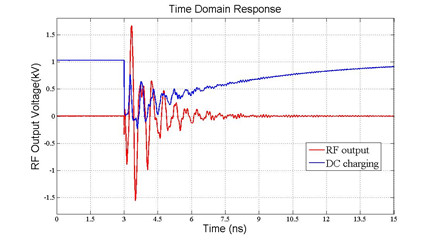
Non-Foster matching of a small loop antenna (ka=0.28) shows a broadband gain improvement over a passive match. However, the noise added by the active non-Foster circuit can exceed the gain improvement. We are currently exploring these performance trades to identify fundamental limits.
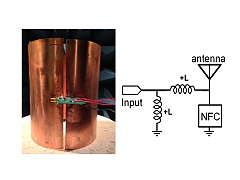
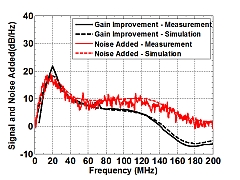
Physics of micro plasmas are studied with a simple oscillator circuit. We have shown that both the Townsend and Fowler-Nordheim theorems cannot be used in the form of traditional or modified Paschen curves to completely predict the behavior of point-to-point microplasmas. With this technique we can measure the separate breakdown and quenching voltages, which are related to the presence of metastable Argon states.

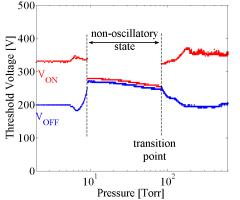
W-band quasi-optic power combiner consisting of a 4X4 tapered slot antenna array couples the field from a transmitting horn antenna to 16 MMICs. After amplification, the power is fed into another 4X4 array and combined. A near-uniform power division from the waveguide to the 16 MMICs is shown.
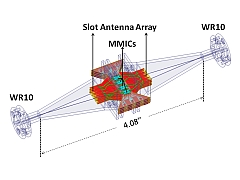
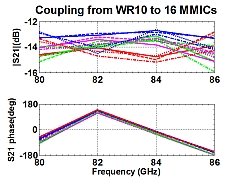
Receptor coated quantum dots are provide cellular-level resolution of neural activities inside the brain. The functionalized quantum dots are selectively bound to different neurotransmitters in the extra-synaptic regions of neurons. Shown here are the emission spectra of a commercially available CdSe/ZnS core/shell quantum dots before and after binding of neurotransmitters leading to a 6nm redshift of the peak wavelength.
